#gaston d'orléans
Explore tagged Tumblr posts
Text

Gaston d'Orléans, Dauphin de France. Par David Nivière.
Born on 19 November 2009 and baptised in the Sainte-Clotilde de Deux cathedral, the young prince has been heir to the Royal House of France since 2019.
5 notes
·
View notes
Text
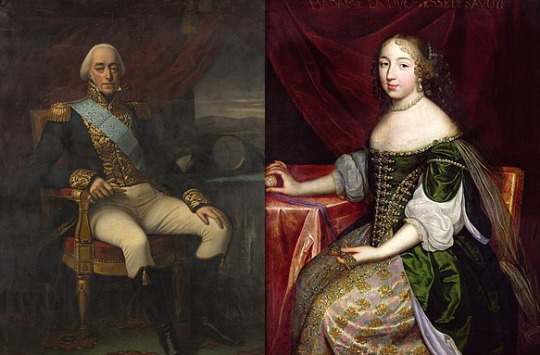
Louis:
Now admittedly this guy didn't do much but first off he abducted from her convent a woman he was already married to and second off his son was assassinated on the orders of Napoleon. Also he's a Bourbon because his grandfather was the son of Louis XIV and Mme de Montespan which is pretty rad too.
Françoise-Madeleine:
Daughter of Gaston d'Orléans and first cousin of Louis XIV, she holds the record of shortest tenancy of the duchy of savoie.
Dates indicated are dates of life.
3 notes
·
View notes
Text
youtube
Air de cour de Etienne Moulinié (1599 - 1676) qui fut au service du frère de Louis XIII, Gaston d'Orléans.
Axelle Bernage : chant Yannick Lebossé : chant et guitare baroque Anabelle Guibeaud : flûte à bec Adrien Reboisson, Olivier Gladhofer, Emmanuel Vigneron : basson
2 notes
·
View notes
Text
Anne of Austria (1601-1666) and her two children, the future Louis XIV, and Philippe, Cardinal Mazarin: Former Chief minister of France & François de Bourbon-Vendôme, son of César de Bourbon-Vendôme and Françoise de Lorraine, is a grandson of Henri IV. He is the first cousin of King Louis XIV. He remains single and dies without issue.
Louis XIV
King of France

Louis XIV, also known as Louis the Great or the Sun King, was King of France from 1643 until his death in 1715. His verified reign of 72 years and 110 days is the longest of any sovereign.
Born: September 5, 1638, Château de Saint-Germain-en-Laye, Saint-Germain-en-Laye
Died: September 1, 1715, Palace of Versailles, Versailles
Spouse: Françoise d'Aubigné, Marquise de Maintenon (m. 1683–1715), Maria Theresa of Spain (m. 1660–1683)
Children: Louis, Grand Dauphin, Louis Auguste, Duke of Maine, MORE
Grandchildren: Philip V of Spain, Louis, Duke of Burgundy, MORE
Parents: Louis XIII, Anne of Austria
Nicknames: Louis the Great, Sun King
Anne of Austria
Queen of Navarre

Anne of Austria was an infanta of Spain who became Queen of France as the wife of King Louis XIII from their marriage in 1615 until Louis XIII died in 1643. She was also Queen of Navarre until that kingdom was annexed into the French crown in 1620.
Born: September 22, 1601, Valladolid, Spain
Died: January 20, 1666, Val-de-Grâce Hospital, Paris
Grandchildren: Louis, Grand Dauphin, MORE
Children: Louis XIV, Philippe I, Duke of Orléans
Spouse: Louis XIII (m. 1615–1643)
Siblings: Philip IV of Spain, Maria Anna of Spain
Parents: Philip III of Spain, Margaret of Austria, Queen of Spain
Philippe I, Duke of Orléans
Brother of Louis XIV.

Monsieur Philippe I, Duke of Orléans, was the younger son of King Louis XIII of France and his wife, Anne of Austria. His elder brother was the "Sun King", Louis XIV. Styled Duke of Anjou from birth, Philippe became Duke of Orléans upon the death of his uncle Gaston in 1660.
Born: September 21, 1640, Château de Saint-Germain-en-Laye, Saint-Germain-en-Laye
Died: June 9, 1701, Parc St cloud, Saint-Cloud
Children: Philippe II, Duke of Orléans, Marie Louise d'Orléans, MORE
Great grandchildren: Louis XV, Marie Antoinette, MORE
Spouse: Elizabeth Charlotte, Madame Palatine (m. 1671–1701), Henrietta of England (m. 1661)
Siblings: Louis XIV
Grandchildren: Marie Adélaïde of Savoy, Louis, Duke of Orléans, MORE
Cardinal Mazarin
Former Chief minister of France

Jules Cardinal Mazarin, born Giulio Raimondo Mazzarino or Mazarini, was an Italian cardinal, diplomat and politician who served as the chief minister to the Kings of France Louis XIII and Louis XIV from 1642 to his death. In 1654, he acquired the title Duke of Mayenne and in 1659 that of 1st Duke of Rethel and Nevers.
Born: July 14, 1602, Pescina, Italy
Died: March 9, 1661, Vincennes
Nationality: French, Italian
Place of burial: Collège des Quatre-Nations, Paris
Full name: Giulio Raimondo Mazzarino
Siblings: Girolama Mazzarini, Michele Mazzarino
Organization founded: Académie royale de peinture et de sculpture
François de Vendôme, duc de Beaufort
Cousin of King Louis XIV

François de Vendôme, duc de Beaufort was the son of César, Duke of Vendôme, and Françoise de Lorraine. He was a prominent figure in the Fronde, and later went on to fight in the Mediterranean.
Born: January 16, 1616, Coucy Castle, Coucy-le-Château-Auffrique
Died: June 25, 1669, Heraklion, Greece
Great-grandparents: Antoine of Navarre, Jeanne d'Albret, MORE
Grandparents: Henry IV of France, Gabrielle d'Estrées, MORE
Parents: César, Duke of Vendôme, Françoise of Lorraine, Duchess of Vendôme
Uncle: Louis XIII

Louis, Anne, Philippe, Mazarin, Beaufort, and most importantly, Pistache
2K notes
·
View notes
Text
Billet spécial n°3 - Les évêques d'Orléans
Jusqu'ici, la majorité des plaques commémoratives présentées sur ce blog peuvent être trouvées à Paris, Lyon ou Orléans. Les deux premières villes ayant déjà eu droit à un billet spécial (sur les hôtels particuliers de l'île Saint-Louis et sur les imprimeurs de Lyon), il est donc tout naturel qu'Orléans reçoive le même traitement.
Orléans est le siège d'un diocèse catholique, centré sur la cathédrale Sainte-Croix d'Orléans, situé dans le centre-ville. La ville a donc accueilli, au fil de l'histoire depuis la fondation du diocèse (datée au IIIème siècle), de nombreux évêques, dont certains sont restés dans l'histoire locale pour leurs actions en faveur des habitants. Les plaques présentées ici peuvent être observées à l'intérieur de la cathédrale. De nombreuses autres plaques (souvent rédigées en latin), moins accessibles...








Ferric de Lorraine (?-1299) échoua d'abord à être nommé évêque d'Auxerre puis de Metz avant d'être nommé à Orléans. Manassès de Seignelay (?-1221) fut en conflit avec le roi Philippe Auguste et participe à la Croisade des Albigeois. Robert de Courtenay (1224-1279) accompagna quant à lui le roi Louis IX durant la huitième croisade en 1270. Raoul Grosparmi (?-1311) légua une grande partie de sa fortune à des monastères de l'Orléanais et de Normandie. Est également mentionné sur cette plaque Guillaume de Boesse (aussi appelé de Bucy ou de Bussy). Texte de la plaque : Évêques d'Orléans inhumés dans la cathédrale capétienne. Reconnus en 1887-88, Guillaume de Boesse, 1237-1258 ; Ferric de Lorraine, 1297-1299. Reconnus en 1937-38, Manassès II de Seignelay, 1297-1221 ; Robert de Courtenay, 1258-1279, Raoul Grosparmi, 1306-1311. In pace
Une autre plaque donne les noms de Milon de Chailly (?-1321), Foulques de Chenac (ou Chanac), Guy de Prunelé et Pierre du Chatel (ou Duchâtel ou Duchastel). Texte de la plaque : Évêques d'Orléans inhumés dans la cathédrale à des emplacements indéterminés. Milon de Chailly, 1312-1321 ; Foulques de Chenac, 1383-1394 ; Guy de Prunelé, 1394-1425 ; Pierre du Chatel, 1551-1552. In pace
Germain de Ganay (?-1520) fut évêque de Cahors avant d'être affecté à Orléans et fut le protecteur de Jacques Lefèvre d'Étaples, auteur d'un traité de magie naturelle. Louis-Gaston Fleuriau d'Armenonville (1662-1733), issu d'une famille noble, fut quant à lui évêque d'Aire avant Orléans. Texte de la plaque : Germain de Ganay, évêque d'Orléans, 1514-1521. Louis-Gaston Fleuriau d'Armenonville, évêque d'Orléans, 1706-1733. Précédemment inhumés sous les degrés du sanctuaire, ont été transférés en ce lieu le dix avril 1938. In pace
Mathurin de la Saussaye (1513-1584) fut, en parallèle de sa charge d'évêque, président de la Chambre des comptes, et dut fuir Orléans pour Tours lorsque la ville fut prise par les calvinistes. Texte de la plaque : Sous les dalles du sanctuaire à droite de l'autel fut inhumé Mathurin de la Saussaye, évêque d'Orléans, 1564-1584. Les restes de deux défunts anonymes ont été trouvés et laissés à cet endroit en 1937. In pace
Jean de l'Aubespine (~1558-1596) fut évêque de Beauvais avant d'être affecté à Orléans et prit position pendant les Guerres de Religion, soutenant tour à tour la Ligue catholique et le parti royaliste. Texte de la plaque : Ici ont été déposés le premier novembre 1937 les restes de tous les défunts anonymes précédemment inhumés dans le chœur où se lisaient avant la Révolution les épitaphes de Jean de l'Aubespine, évêque d'Orléans, 1587-1596 ; Louis de Menou, doyen du chapitre, † 1648 ; Robert Martin du Larry, chanoine de Ste Croix, † 1667. In pace
Nicolas de Netz (1592-1646) entra pendant l'exercice de son évêché en conflit avec les jésuites de sa paroisse. Son successeur, Alphonse d'Elbène (~1600-1647) élabora les statuts synodaux du diocèse d'Orléans, des documents à valeur administrative permettant de mieux en comprendre le fonctionnement. Texte de la plaque : Nicolas de Netz, évêque d'Orléans, 1632-1646. Alphonse d'Elbène, évêque d'Orléans, 1646-1665. Précédemment inhumés dans le chœur, ont été transférés en ce lieu le premier novembre 1957. In pace
Pierre du Cambout de Coislin (1636-1706) est décrit comme un prêtre dévoué à ses paroissiens, faisant souvent l'aumône et consacrant une bonne partie des revenus du diocèse à des œuvres de charité. Il s'opposa également à la persécution des protestants, il fut proche du roi Louis XIV et participa à la fondation du grand séminaire d'Orléans en 1670. Texte de la plaque : A la mémoire de son éminence Pierre du Cambout de Coislin, cardinal-prêtre de la Sainte Église Romaine du titre de la Trinité des Monts, Grand aumônier de France, Évêque d'Orléans 1636 - 1666 - 1706. Très aimé du roi Louis XIV, vénéré du clergé, chéri des pauvres, il a laissé un nom béni dans ce Diocèse qu'il édifia quarante années par ses vertus et combla de ses bienfaits. Il institua le Grand Seminaire. Il contribua à doter la ville d'Orléans de l'Hopital Général. Sa dépouille mortelle, d'abord inhumée dans le sanctuaire, a été transféré en ce lieu lors du dégagement des restes de la cathédrale romane, en 1938. Le Cardinal de Coislin avait fait décorer magnifiquement le choeur de la cathédrale par les plus grands artistes, grâce aux libéralités du Roi, accrues de ses propres dons. Le jubé, commencé en 1689 sur les dessins de Charles Le Brun, enrichi et terminé en 1695 par Jules Hardouin-Mansart, fut détruit pendant la Révolution. Quelques vestiges en ont été réunis autour de cette nouvelle sépulture. Les boiseries, exécutées de 1702 à 1706 sur les plans de Jules Hardouin-Mansart et de Jacques-Jules Gabriel par le sculpteur Jules Degoullons, étaient admirées comme "l'un des plus beaux ouvrages du Royaume" avant de disparaître avec le jubé. Elles ont été replacées dans la cathédrale en 1938, Mgr Jules-Marie Courcoux étant évêque d'Orléans.
Enfin, Étienne-Alexandre Bernier (1762-1806) se fit en particulier remarquer pour ses prises de position (avant qu'il ne soit nommé évêque d'Orléans) lors de la Guerre de Vendée, durant laquelle il soutint les Vendéens et les partis royalistes, au sein desquels il construisit une très grande influence, quoiqu'il fut critiqué par ses alliés pour son ambition. Il y acquit toutefois la réputation nécessaire pour être chargé, avec d'autres, par Napoléon Bonaparte de la négociation du Concordat en 1801. Texte de la plaque : In Mémoriam. Etienne-Alexandre Bernier, négociateur du Concordat de 1801, évêque d'Orléans en 1802, restaurateur du diocèse, décédé à Paris le 18 octobre 1806, inhumé au cimetière Saint Pierre de Montmartre. Son cœur a été déposé dans cette cathédrale, "Chapelle Notre Dame de compassion". In pace
#collectif#commemoration#inhumation#religieux#france#loiret#orleans#non datee#nicolas de netz#alphonse d'elbene#jean de l'aubespine#germain de ganay#louis gaston fleuriau d'armenonville#ferric de lorraine#manasses de seignelay#robert de courtenay#raoul grosparmi#guillaume de boesse#milon de chailly#foulques de chenac#guy de prunele#pierre du chatel#pierre du cambout de coislin#mathurin de la saussaye#etienne alexandre bernier
0 notes
Text
ANNE MARIE LOUISE D’ORLÉANS // DUCHESS OF MONTPENSIER
“She was the only daughter of Gaston d'Orléans with his first wife, Marie de Bourbon, Duchess of Montpensier. One of the greatest heiresses in history, she died unmarried and childless, leaving her vast fortune to her cousin Philippe I, Duke of Orléans. After a string of proposals from various members of European ruling families, including Charles II of England, Afonso VI of Portugal, and Charles Emmanuel II of Savoy, she eventually fell in love with the courtier Antoine Nompar de Caumont and scandalised the court of France when she asked Louis XIV for permission to marry him, as such a union was viewed as a mésalliance. She is best remembered for her role in the Fronde and her role in bringing the famous composer Jean-Baptiste Lully to the king's court, and her Mémoires.”
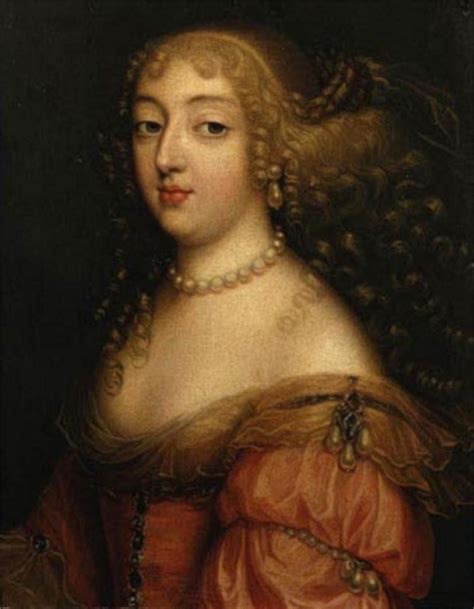

0 notes
Text

~ "Francesca Maddalena D'Orléans was born at the Castle of Saint-Germain-en-Laye on October 13, 1648. She was the youngest of the daughters of Gastone d'Orléans and his second wife Margherita di Lorena. From birth she received the surname of Mademoiselle de Valois, derived from one of her father's minor titles. As the French court label said, Francesca Maddalena held the title of Grandson of France, as descendant in male line from King Henry IV of France. It was actually titled as petits-enfants de France. Francesca Maddalena married her Charles Emanuele II, duke of Savoia, for prosecutor on March 4, 1663. The couple first met in Annecy on April 3, 1663, where their official ceremony took place. They then arrived in Turin, capital of the Duchy of Savoia, on June 15, 1663. But the young bride died in the Royal Palace of Turin not even a year after the wedding, without giving descendants to her husband, who married Maria Giovanna Baptista di Savoia-Nemours. This portrait of him, anonymously, is preserved in the Reggia di Venaria." ~
1 note
·
View note
Text
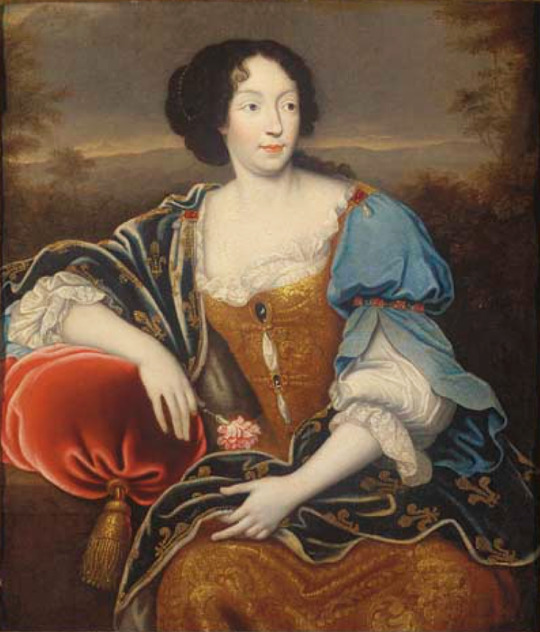
Portrait of Élisabeth Marguerite d'Orléans, misidentified with Louise de Keroual, Duchess of Portsmouth Circle of Pierre Mignard I (XVIIc., French)
Élisabeth Marguerite d'Orléans (26 December 1646 - 17 March 1696), known as Isabelle d'Orléans, was the Duchess of Alençon and, during her husband's lifetime, Duchess of Angoulême. She was a daughter of Gaston d'Orléans and a first cousin of Louis XIV of France. After the death of her husband and her son, she became the Duchess of Alençon and Angoulême in her own right. Isabelle (whom the French knew as "Madame de Guise") spent every summer in her duchy of Alençon and most winters at the royal court. Isabelle was a fervent supporter of her cousin Louis XIV's policies to bring Huguenots back into the Catholic fold. As early as November 1676, when she supervised the conversion of a Protestant lady, Isabelle commissioned from Marc-Antoine Charpentier the first of a succession of oratorios that recounted how St. Cecilia had won over her bridegroom and his brother to Christianity. After the Revocation of the Edict of Nantes in October 1685, she created a house for "New Converts" in her duchy of Alençon and actively converted the local Huguenots. In 1694, she gave the Luxembourg Palace to Louis XIV.[8] She died in 1696 at the Palace of Versailles and was buried in the Great Carmel of Paris, among the nuns.
#carnation#dianthus#portrait#painting#17th century art#17th century painting#women portrait#Élisabeth Marguerite d'Orléans
1 note
·
View note
Text
Ministerial rule: habituation is not acceptance.
Richelieu's exercise of power as first minister from 1624 was not seen as a providential gift of strong leadership in difficult times. France was a monarchy, and one political issue about which there was overwhelming consensus in early modern France was that kings alone ruled. Their right to rule was ordained by God, who had established kings and princes as His direct representatives on earth. They might delegate some of their executive authority to subordinate agents, but this was strictly constrained by the need for the king actively and visibly to take all political decisions- for he alone was accountable to God for these. If French kings were to be advised, and there was plenty of precedent and tradition for taking advice, then there were constitutionally desirable forms in which this advice should be given: meetings of the Estates General, the most recent one having been held in 1614 to advise the queen mother and the young Louis XIII; assemblies of notables; the constitutional opinions and judgements of the Parlement of Paris, and to some extent the lesser Parlements. Above all, regular counsel should be sought through the members of the royal family and princes of the blood, all of whom were considered natural advisors in royal decision-making. More formally, of couse, an adult king attended meetings of his Conseil d'en Haut, and listened to the advice of his senior ministers before making his decisions.
In this political world dominated by consensus about the king's indivisible sovereignty, the existence of a first minister posed a considerable problem. In what would be understood as normal political circumstances there was no dominant minister, least of all one whose power and patronage might overshadow the ruler's. There would be a group of government ministers of relatively equivalent standing in terms of political experience, clients, and royal favour, even if their particular offices- chancellor, keeper of the seals, superintendent of finances, secretary for foreign affairs- implied varying status in governmental and court hierarchies. These figures would vie for the king's favour in pursuit of particular policies or actions. Though individually they might have great authority to make policy and distribute favour within their own administrative fiefs, there was little possibility that any one of them could consistently shape overall crown policy. During the reign of Henri IV (1589-1610), which in the 1630s and 1640s was increasingly seen as the model for virtuous royal government, Maximilien de Béthune, duc de Sully, might enjoy considerable royal favour and confidence, and directly control the king's finances, but he was never first minister. He was flanked by high-status figures such as Pomponne de Bellièvre and Nicolas de Neufville de Villeroy, who enjoyed the king's confidence, controlled their own parts of the government, and were as likely to influence the king by their policy proposals as Sully was. The apparent re-establishment of such a system under Louis XIV's personal rule in 1661 signalled a return to this style of traditional royal government that was certainly not lost on contemporaries.
Government by a dominant first minister, in contrast, had to be carefully finessed; it was likely to be seen as rule by a "minister-favourite", with all the pejorative implications of undue influence and personal and financial advancement. The strength of first-ministerial rule was determined by the ability to replace or marginalize other figures of authority in the government, by appointing clients or allies to other, now subordinate, ministerial positions, and by constructing mechanisms to ensure a monopoly of access and advice to the ruler. Both Louis XIII and Richelieu had early and first-hand experience of such rule by minister-favourite in the rapid rise and fall of Concino Concini during the later regency government of queen Marie de Médicis. Concini appointed his client Richelieu as secretary for foreign affairs, and was murdered in 1617 by a coterie around the young Louis XIII, who in turn seized power from the regent. The young Louis XIII was thus presented as an enemy of over-powerful ministerial rule, and créatures like Richelieu who had risen as one of Concini's ministerial team were summarily dismised […]
Louis XIII grew frustrated with what seemed the appeasement of Spain by his ministers in the early 1620s. He was prepared to abandon previous antipathies and to consider appointing a minister with a known record of anti-Spanish pronouncements, who had positioned himself within a hawkish faction in debates about French foreign policy. Sponsored by the queen mother, in whose party he had established himself by default, cardinal Richelieu made his return to the royal council in 1624.

Richelieu's intention to remove those ministers who might be able to challenge his influence with the king was clear from the outset: the disgrace of Charles de La Vieuville, superintendent of finances, followed in short order […] Meanwhile he sought to consolidate his standing with Louis XIII. The young king considered Richelieu under probation, and tolerated the extension of his power and dominance of the council only because of his frustration with the failures of previous ministers […]
Yet for Richelieu defeating the Huguenots in France was essentially a distraction from the process of justifying his position to the king as the architect of an aggressive anti-Habsburg foreign policy. Unlike Mazarin, who was to prove dangerously complacent about "selling" his policies to the French political class, Richelieu spent time and money acquiring writers who would defend the necessity of France's struggle against Habsburg "encirclement" and "universal monarchy", and who vaunted Richelieu's ability in the conduct of affairs. Yet despite this attempt to shape political opinion, criticism of Richelieu's direct assumption of power, of his use of his créatures to manage the king, and his exclusion of alternative sources of counsel was widely shared and well articulated. Already the argument was gathering weight that Richelieu's position represented an illegitimate, abusive seizure of power from the king. Opposition coalesced around the king's brother, Gaston d'Orléans, and his ill-treatment by the cardinal, who feared that Gaston and then his possible heirs were likely to succeed to the throne in the absence of children from Louis XIII's marriage. The disgrace and exile of Marie de Médicis after her failure to dislodge Richelieu in the November 1630 "Day of Dupes" worsened this perception, in which it seemed that Richelieu was intent on eliminating and replacing the royal family as "natural" advisors to the king.
[..]
France was operating on the sidelines of the continuing Thirty Years' War, in which the Habsburg powers of Spain and the Emperor were fully occupied by the struggle against the Dutch and those German protestant princes grouped under the imposing military leadership of Sweden. Richelieu could thus offer a relatively low-cost, apparently low-risk enhancement of the king's prestige and influence. Despite the failed rebellion in 1632 led by the duc de Montmorency, these years were notably less preoccupied with the problem of ministerial "tyranny". As was to be the case for cardinal Mazarin in the mid-1640s, foreign policy success could mute at least some domestic political pressure. The king's satisfaction with Richelieu's achievements on his behalf sent a message to those who opposed both the principle and the practice of first-ministerial rule. Richelieu himself was convinced that the execution of the duc de Montmorency, who, until his alliance with Gaston d'Orléans in 1632, had been a committed servant of the monarchy, had sent a clear message about the king's commitment to his first minister.
It is impossible to predict how long this situation might have continued, with France able to stand on the margins of the Thirty Years' War, accruing piecemeal but incremental territorial and political gains, and keeping both her military and financial commitments relatively contained. But habituation to rule by a first minister who was perceived to exercise an ever tighter control over the king's policies, and a monopoly over appointments and favour, was not the same as lasting acceptance of such a system. There remained a fundamental tension between the sovereign's right to delegate executive powers to whoever he chose, and the legitimacy of a minister who was usurping legislative and prerogative authority that could only belong to the king.
David Parrott- 1652- The Cardinal, the Prince, and the Crisis of the Fronde
#xvii#david parrott#1652: the cardinal the prince and the crisis of the fronde#la fronde#cardinal de richelieu#cardinal mazarin#louis xiii#henri iv#sully#marie de médicis#concino concini#la vieuville#henri ii de montmorency#gaston d'orléans#the thirty years war
19 notes
·
View notes
Photo
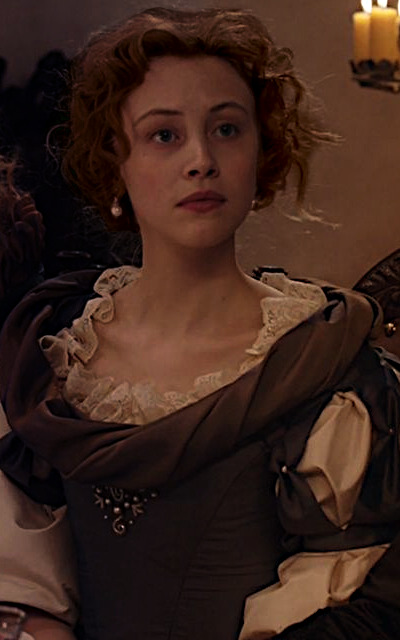
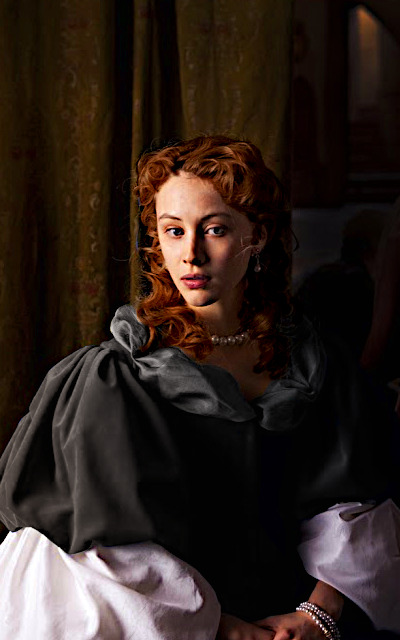

Sarah Gadon fancasted as Marguerite de Lorraine, wife of Gaston d’Orléans
#fancastchallenge by @sweetiesplum
Jour 6 : Personnage historique
J’ai choisi Sarah dans La Reine Garçon (The Girl King) parce qu’elle m’a fait pensé au fait qu’elle pourrait faire une superbe Marguerite de Lorraine. Et puis, il fallait que je fasse forcément quelqu’un de l’entourage de Gaston d’Orléans, qui de mieux que sa seconde épouse ? :D
Marguerite de Lorraine (1615-1672) est la soeur cadette du duc Charles IV de Lorraine. Initialement prévue à devenir religieuse, elle rencontre en 1629 à Nancy Gaston d’Orléans, en exil en Lorraine. Récemment veuf, Gaston d’Orléans s’éprend de Marguerite qu’il surnomme “Angélique” ou encore “L’ange”. Gaston d’Orléans est un très bon parti : frère cadet du roi Louis XIII, il semble plus que probable qu’il devienne roi à l’avenir puisque son frère ne parvient pas à avoir d’enfant. Une deuxième fois en exil en Lorraine au deuxième semestre 1631, Gaston d’Orléans formule le souhait d’épouser Marguerite. Louis XIII, dont les relations sont mauvaises avec Charles IV de Lorraine, refuse l’union. Contre son avis, Gaston et Marguerite se marie secrètement dans la nuit du 2 au 3 janvier 1632. L’union est découverte en septembre 1632 par Louis XIII. Ce dernier avec l’aide de Richelieu va tout faire pour tenter de le faire annuler. Afin d’échapper aux pressions françaises, Marguerite s’enfuit de Nancy de manière rocambolesque pour rejoindre Gaston à Bruxelles. De là, Marguerite va solliciter notamment le Pape pour que son mariage avec Gaston d’Orléans soit reconnu. Son époux, contraint de rentrer en France avant l’entrée en guerre de Louis XIII contre l’Espagne, va s’opposer avec acharnement contre son frère pour reconnaître la nullité de son union avec Marguerite. Ce n’est que quelques jours avant sa mort en mai 1643 que Louis XIII reconnaît le mariage de son frère avec la soeur du duc de Lorraine. Enfin reconnue comme duchesse d’Orléans, Marguerite et Gaston forment un couple uni qui étonne les contemporains par l’affection qu’ils se vouent l’un à l’autre. Se tenant à l’écart de la Cour, Marguerite de Lorraine est connue pour prendre politiquement position en faveur de son frère Charles et du duché de Lorraine de manière générale. Gaston d’Orléans et elle ont 5 enfants mais seules trois filles survivent. Gaston d’Orléans décède en 1660. Marguerite lui survit jusqu’en 1672.
#fancastchallenge#sarah gadon#avatar#avatar sarah gadon#sarah gadon avatars#fancast#marguerite de lorraine#gaston d'orléans#gaston of orléans#XVII century#duchy of lorraine#lorraine
7 notes
·
View notes
Text

Gaston, Antoinette, Louise-Marguerite, Joseph et Jacinthe d'Orléans. By David Nivière.
1 note
·
View note
Text

Gaston:
Known as the scheming younger brother of Louis XIII and yes he certainly was (participated in the Fronde to unthrone his nephew, married twice the same person in secret despite everyone forbidding it, etc.) but he was also a keen collector and his collections are part of the reason the botanists of the time could compile such an exhaustive History of Plants (because among his collections was a series of plants scientific drawings)
Catherine:
She ensured the regency until her son Henri III came of age.
Dates indicated are dates of regency
2 notes
·
View notes
Photo










history + the 1001 conspiracies of Gaston d'Orléans
#historyedit#perioddramaedit#documentaryedit#mazarin#richelieu#anne of austria#gaston d'orléans#mine#*
238 notes
·
View notes
Photo

Welcome to what will become another trilogy. From the authors of @tkwrtrilogy and @thehouseofdurin comes “The Secret of the House of Bourbon”. It has already found a home on Instagram and WordPress (as well as Facebook), now it comes to Tumblr.
But wait, there’s more: This story cover 197 years of the Bourbon Dynasty--from its “humble” beginnings with Antoine de Bourbon to the height of its majesty with Louis XIV.
Not only do you get to visit Versailles again, you get see it how it all began--from the hunting grounds to golden palace it became--and there are secrets that have been left untold (no, really, we’re not trying to be dramatic).

See something you like? Well, I can say one thing--I get to be the king of France (like I was Thranduil and soon-to-be Oropher in @tkwrtrilogy3) and the generations of the ruling Kings of Dale in @oflordsandkingstkwrtbook (that’s me, too). @fortunatelyclevercandy makes her debut as my brothers, (Duc d’Orléans--Gaston and everyone’s favorite, Philippe de France). As always, I am beginning in the middle of the book as Louis XIII, father of Louis XIV and Philippe. I have already started over on WordPress and I am about to add more (to both trilogies).

You’ll be surprised about what you DON’T know about Louis XIII.
After Louis XIII, I will be Louis XIV. Yes, you’ll be surprised about what you DON’T know about him, too.

And MANY, many, many, many, many, many more exciting things about the Kings of France and Navarre (which actually ceased to exist around 1620 but that’s another story altogether 🤫).
So, sit back and relax and read a lot of things in multiple languages (as my co-author will be writing in her native Italian and probably some English and I will be writing in my native English and in my third language which just so happens to French).

(Yes, there are even things you don’t know about Philippe, Monsieur, Duc d’Orléans--lots. 🤐).
Welcome to the Kingdom of France--Again.

My France, of course.

#the house of bourbon#louis xiv#philippe d'orléans#louis xiii#gaston d'orléans#henri iv#antoine de navarre#france#the kings of france#france and navarre#a book#a trilogy#writers of pinterest#facebook#wordpress#instagram#versailles#i am the king#get used to it#no really#co authors#brothers#royal brothers#secrets#16th century#17th century#multilingual#bourbon trilogy#louis dieudonné
7 notes
·
View notes
Note
Do you know anything of the relationship between Philippe and his uncle Gaston? 😊
-Philippe was referred to as Petit Monsieur whilst his uncle Gaston was alive
-Gaston was named one of Philippe’s godparents at his baptism (aged 8)
-Gaston is reported to have been one of Philippe’s favourite relatives at the time that Philippe’s independent household was set up, partly because they shared the same experiences as brother to the King
-Gaston is described as being a friend of Philippe’s at the time of his death in 1660
-Despite their close relationship, it is said that (at least by this time) Philippe had never showed any interest in becoming king
This is all I could find, I hope it helps!!
29 notes
·
View notes
Photo
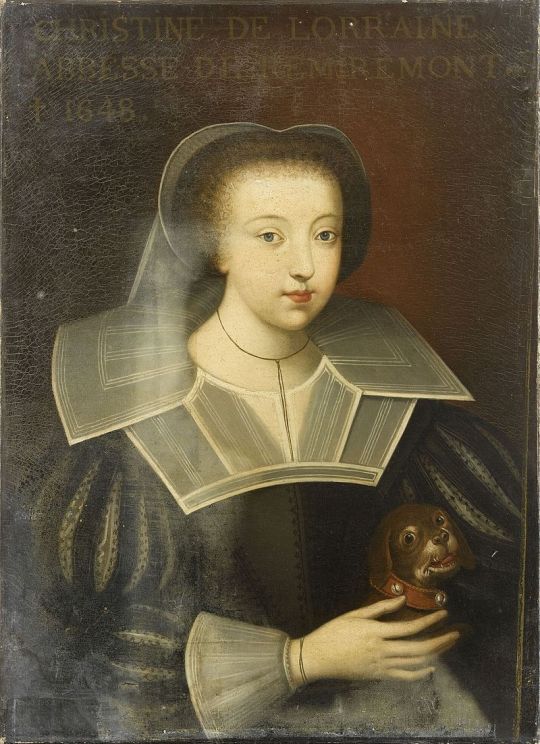
Catherine of Lorraine (3 November 1573 – 7 March 1648) was the Abbess of Remiremont.
Catherine was the seventh child and fourth daughter of Charles III, Duke of Lorraine, and his wife Claude, daughter of Henry II of France and Catherine de' Medici. Her mother died in childbirth in 1575 when Catherine was a year and a half. She was born at the Ducal Palace of Lorraine in Nancy, capital of the Duchy of Lorraine.
Catherine was devoted to religion and even went as far to ignore an alliance with the future Holy Roman Emperor, Ferdinand II.
In 1602 Catherine became the Coadjutrice of the Abbey. In 1612 she became the Abbess of the prestigious Remiremont Abbey, a Benedictine abbey near Remiremont, Vosges, France. The previous abbess, Elizabeth of Salm, had resigned specifically for Catherine to take the post.
Remiremont was one of the most important, illustrious and aristocratic Abbey in France and was closely associated with the House of Lorraine. She later became the coadjutor to her niece, Margaret. Margaret had lost her mother in 1627 and went to live with Catherine at Remiremont. The young Marguerite was later the Duchess of Orléans as wife Gaston, scandalous brother of Louis XIII. Margaret, as a result of marrying Gaston without royal permission, was sent into exile with her husband in Brussels.
In 1638 the troops of Turenne occupied Remiremont for a month. The following year the Princess obtained the neutrality of Vosges (for Epinal, Remiremont, Bruyère, St Dié, Arches) for the rest of the Thirty Years War.
She died in a Lorraine which had been ravaged by the Thirty Years war. At her death, the abbey was given to her great niece Élisabeth Marguerite d'Orléans who ruled the abbey under a regency of her parents, the Duke and Duchess of Orléans.
Remiremont was ruled by two more Lorraine princesses; Élisabeth Charlotte (1700–1711) and then Anne Charlotte (1714–1773).
10 notes
·
View notes